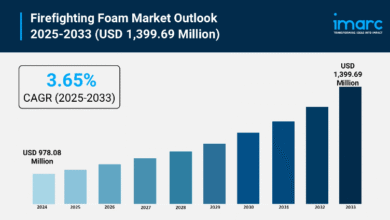Why ISO 14001 Certification Matters for Energy & Utilities: A Human Guide to Going Green

Picture this: a bustling energy plant, turbines humming, lights flickering across a sprawling utility grid. Now imagine that same operation running smoother, cleaner, and with a badge of environmental responsibility that makes regulators, customers, and even Mother Nature nod in approval. That’s the power of ISO 14001 certification. For the energy and utilities sector, where environmental impact is under constant scrutiny, this certification isn’t just a shiny badge—it’s a game-changer. But what does it really mean, and why should you care? Let’s break it down.
What’s ISO 14001, Anyway?
ISO 14001 is an international standard for environmental management systems (EMS). It’s like a playbook for organizations to minimize their environmental footprint while staying compliant with regulations and improving efficiency. For energy and utilities companies—think power plants, water treatment facilities, or renewable energy providers—this standard is a roadmap to balancing operational demands with environmental stewardship.
You know what’s fascinating? The standard isn’t about hitting a specific “green” target. Instead, it’s about creating a system to manage environmental risks, reduce waste, and show the world you’re serious about sustainability. It’s less about perfection and more about progress. And in a sector where public perception and regulatory pressure are always lurking, that’s a big deal.
Why Energy & Utilities Need This
Energy and utilities companies aren’t exactly sipping tea in an office cubicle. You’re dealing with massive operations—think coal plants, wind farms, or water distribution networks—that can have a serious environmental impact. Emissions, water usage, waste disposal, you name it—these are the kinds of things that keep regulators up at night and communities on edge.
ISO 14001 helps you get a handle on all that. It’s like having a seasoned coach guiding you through a high-stakes game. You’ll identify risks, set goals, and track progress in a way that’s structured but flexible enough to fit your unique operation. Plus, it’s a signal to stakeholders—investors, customers, and local communities—that you’re not just talking the talk but walking the walk.
The Nuts and Bolts of ISO 14001
So, how does this thing work? ISO 14001 is built on a cycle called Plan-Do-Check-Act (PDCA). It’s not rocket science, but it’s a disciplined approach that keeps you on track. Here’s how it breaks down:
- Plan: Figure out your environmental impacts—say, carbon emissions from a gas-fired plant or chemical runoff from a water treatment facility. Set goals, like cutting emissions by 10% or reducing water waste.
- Do: Put your plan into action. Train staff, upgrade equipment, or switch to greener suppliers. Maybe you invest in energy-efficient turbines or rethink how you handle hazardous waste.
- Check: Monitor your progress. Are you hitting your targets? Use audits and data to see what’s working and what’s not. This is where the rubber meets the road.
- Act: Tweak your approach based on what you’ve learned. Maybe you need better training or a new technology to close the gap.
Sounds simple, right? But here’s the thing—it’s not a one-and-done deal. The PDCA cycle keeps you improving over time, which is critical in an industry where regulations and public expectations are always shifting.
Why It’s a Big Deal for Energy & Utilities
Let’s get real for a second. The energy and utilities sector is under a microscope. Climate change, resource depletion, and pollution are hot-button issues, and your industry is often in the crosshairs. ISO 14001 gives you a way to stay ahead of the curve. Here’s why it’s worth the effort:
- Regulatory Compliance: Governments are cracking down on environmental violations. ISO 14001 helps you stay compliant, avoiding hefty fines or legal headaches. For example, the EU’s stringent emissions laws or the U.S. EPA’s regulations are no joke—non-compliance can cost millions.
- Cost Savings: Efficiency is the name of the game. Reducing energy waste or optimizing water usage doesn’t just help the planet—it saves you money. A utility company that cuts its energy consumption by even 5% can see significant savings on operational costs.
- Reputation Boost: Customers and communities want to know you’re doing your part. ISO 14001 certification is like a public handshake, showing everyone you’re committed to sustainability. In 2025, with eco-conscious consumers on the rise, that’s a competitive edge.
- Risk Management: Spills, leaks, or emissions scandals can tank your reputation and bottom line. ISO 14001 helps you identify and mitigate those risks before they become front-page news.
You know what’s wild? Some companies think going green is a burden, but ISO 14001 flips that script. It’s not about sacrifice—it’s about smart business. Take a wind farm operator who uses ISO 14001 to streamline maintenance processes, cutting downtime and boosting energy output. That’s not just good for the environment; it’s good for profits.
The Journey to Certification: What to Expect
Getting ISO 14001 certified isn’t like flipping a switch—it’s a process. But don’t worry, it’s manageable if you approach it step-by-step. Here’s what the journey looks like:
- Gap Analysis: Start by assessing where you stand. What are your current environmental practices? Where are the gaps? This is like taking a hard look in the mirror—sometimes it’s uncomfortable, but it’s necessary.
- Build Your EMS: Create an environmental management system tailored to your operations. This means setting policies, defining roles, and outlining procedures. For a utility company, this might involve protocols for handling wastewater or monitoring air quality.
- Implementation: Roll out your EMS across the organization. Train your team, update processes, and maybe invest in tech like real-time emissions monitoring. Pro tip: get buy-in from leadership early on—it makes all the difference.
- Internal Audit: Check your progress with an internal audit. Are your processes working? Are employees following them? This is your chance to iron out any kinks.
- Certification Audit: Bring in an accredited third-party auditor to evaluate your EMS. They’ll dig deep, so be ready to show your work—data, records, the whole shebang.
- Maintain and Improve: Once certified, you’re not done. ISO 14001 requires ongoing audits and improvements to keep your certification active. It’s a commitment, but it keeps you sharp.
Here’s a quick tangent: I remember reading about a water utility in California that went for ISO 14001 certification. They thought it’d be a bureaucratic nightmare, but after streamlining their waste management, they cut costs by 15% and earned community praise. It’s proof that the process, while rigorous, pays off.
Challenges You Might Face (And How to Tackle Them)
Let’s not sugarcoat it—getting ISO 14001 certified isn’t a walk in the park. Energy and utilities companies face unique challenges:
- Complexity of Operations: Power plants or water treatment facilities aren’t simple offices. You’ve got heavy machinery, hazardous materials, and sprawling infrastructure. Mapping out every environmental impact can feel overwhelming. Solution: Break it down by department or process. Start with high-impact areas like emissions or waste.
- Employee Buy-In: Convincing a team of engineers or technicians to embrace new processes can be like herding cats. Solution: Communicate the “why” behind ISO 14001. Show how it benefits them—less waste, safer workplaces, or even job security in a greener future.
- Upfront Costs: Upgrading equipment or training staff requires investment. Solution: Focus on long-term savings. For instance, energy-efficient pumps might cost more upfront but slash your electricity bill over time.
Feeling daunted? Don’t be. The key is to start small and scale up. Think of it like tuning up a car—you don’t rebuild the engine overnight, but you make steady improvements until it’s purring.
Real-World Wins: ISO 14001 in Action
Want some inspiration? Let’s look at how ISO 14001 has made a difference in the energy and utilities world:
- Renewable Energy: A solar farm in Australia used ISO 14001 to reduce its land disturbance during installation. By optimizing site planning, they cut soil erosion by 20% and won over local environmental groups.
- Water Utilities: A UK water company implemented ISO 14001 to manage chemical discharges. They reduced their environmental incidents by 30% in two years, saving millions in potential fines.
- Power Generation: A U.S. coal plant (yes, even fossil fuel operations can go green!) used ISO 14001 to improve ash disposal processes, cutting hazardous waste by 15% and boosting community trust.
These aren’t just feel-good stories—they’re proof that ISO 14001 delivers measurable results. It’s like planting a seed that grows into a stronger, more resilient operation.
A Word on Trends: Sustainability in 2025
Here’s something to chew on: in 2025, sustainability isn’t just a buzzword—it’s a business imperative. With global temperatures rising and governments pushing net-zero goals, energy and utilities companies are at the forefront of the green revolution. ISO 14001 aligns perfectly with this shift. It’s not just about compliance; it’s about staying relevant in a world where customers demand transparency and accountability.
Take the rise of renewable energy. Solar and wind are booming, but even these “green” industries face scrutiny over land use or material recycling. certificación 14001 helps you address those concerns head-on, whether it’s minimizing habitat disruption or managing end-of-life solar panels.
And let’s not forget the public. Social media platforms like X are buzzing with conversations about climate change. A quick scroll shows customers praising companies that walk the sustainability talk and slamming those that don’t. ISO 14001 gives you a credible way to join the right side of that conversation.
How to Get Started Today
Ready to take the plunge? Here’s a no-nonsense plan to kick things off:
- Assess Your Needs: Hire a consultant or use tools like the ISO 14001 checklist from the International Organization for Standardization (ISO) website to gauge your starting point.
- Engage Your Team: Hold workshops to get everyone on board. Use real-world examples—like those cost savings or community goodwill—to make it relatable.
- Leverage Technology: Tools like Enablon or Sphera can help you track environmental data and streamline your EMS.
- Partner Up: Work with an accredited certification body like DNV or Bureau Veritas for a smooth audit process.
Here’s a pro tip: don’t go it alone. Connect with industry peers who’ve been through the process. Platforms like LinkedIn or industry forums are goldmines for tips and lessons learned.
The Bigger Picture: Why It’s Worth It
Let me ask you something—when was the last time you felt truly proud of your company’s impact? ISO 14001 isn’t just about checking boxes; it’s about building a legacy. For energy and utilities, where every decision ripples through communities and ecosystems, that’s a big deal. You’re not just powering homes or treating water—you’re shaping the future.
Sure, the certification process takes effort. There’ll be late nights, tough conversations, and maybe a few headaches. But when you see your operations running cleaner, your costs dropping, and your stakeholders smiling, it’s all worth it. It’s like climbing a mountain—the view from the top makes every step feel meaningful.
So, what’s stopping you? The energy and utilities sector is at a crossroads. ISO 14001 is your chance to lead the charge, proving that profitability and sustainability can go hand in hand. Start small, think big, and watch your organization shine.




